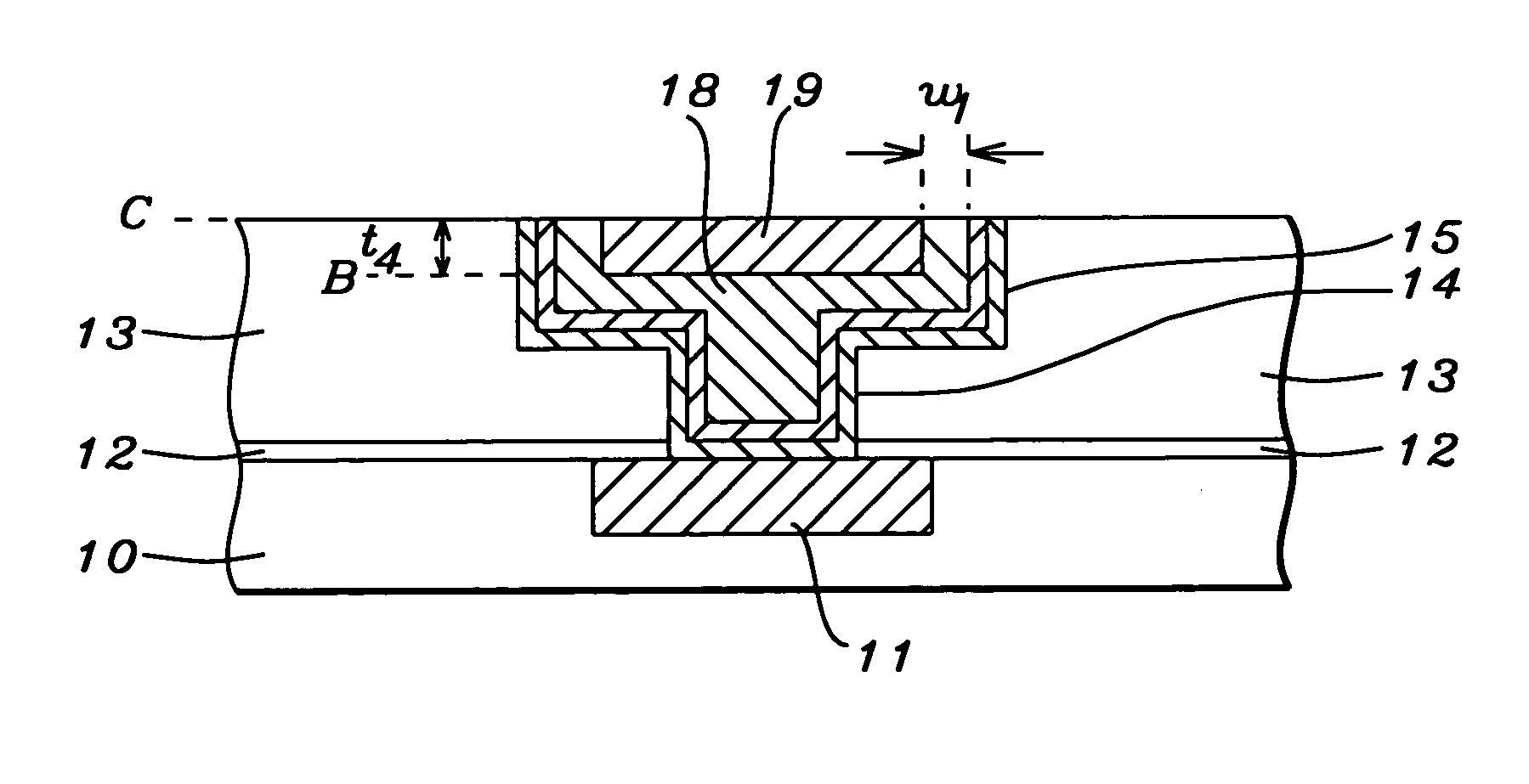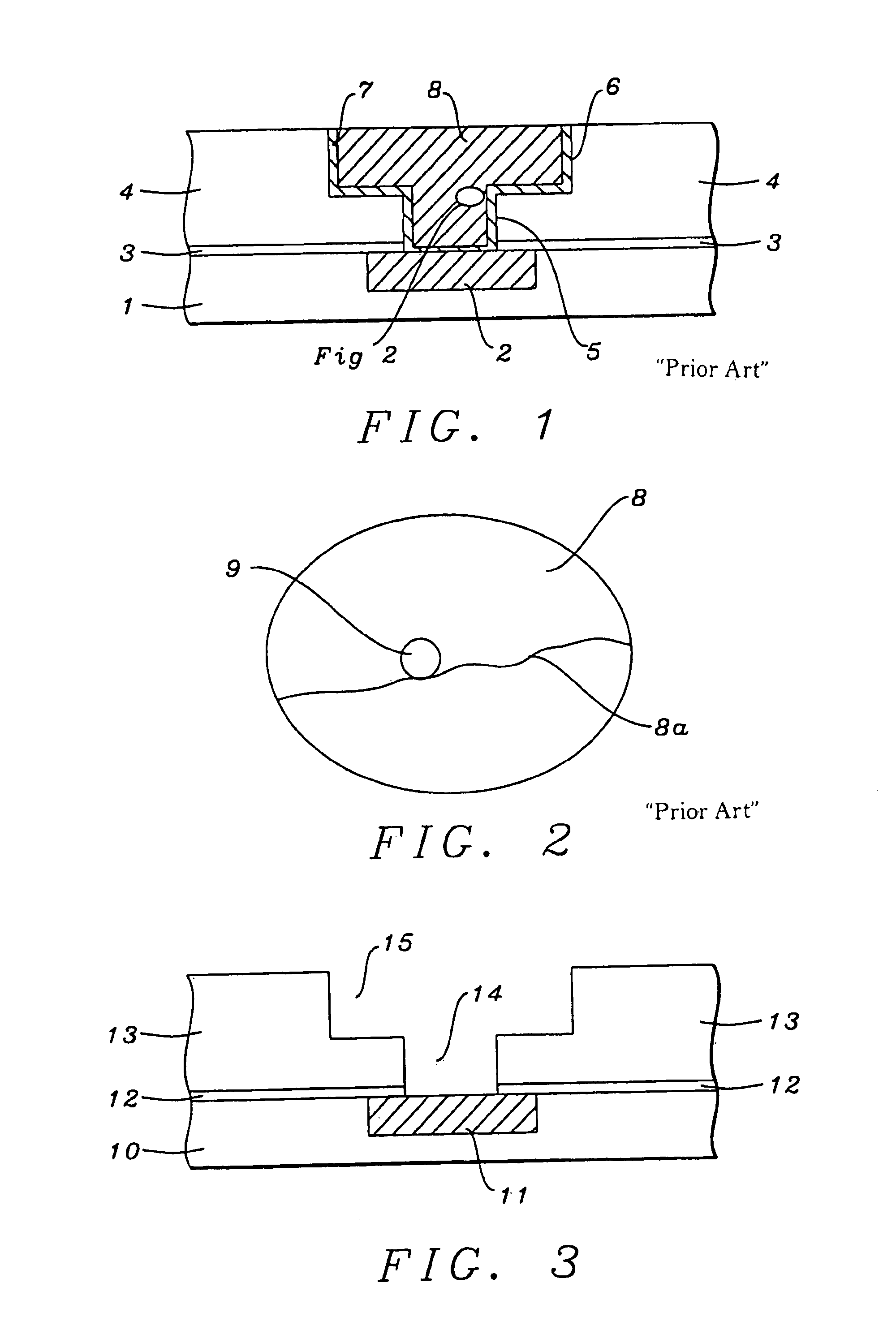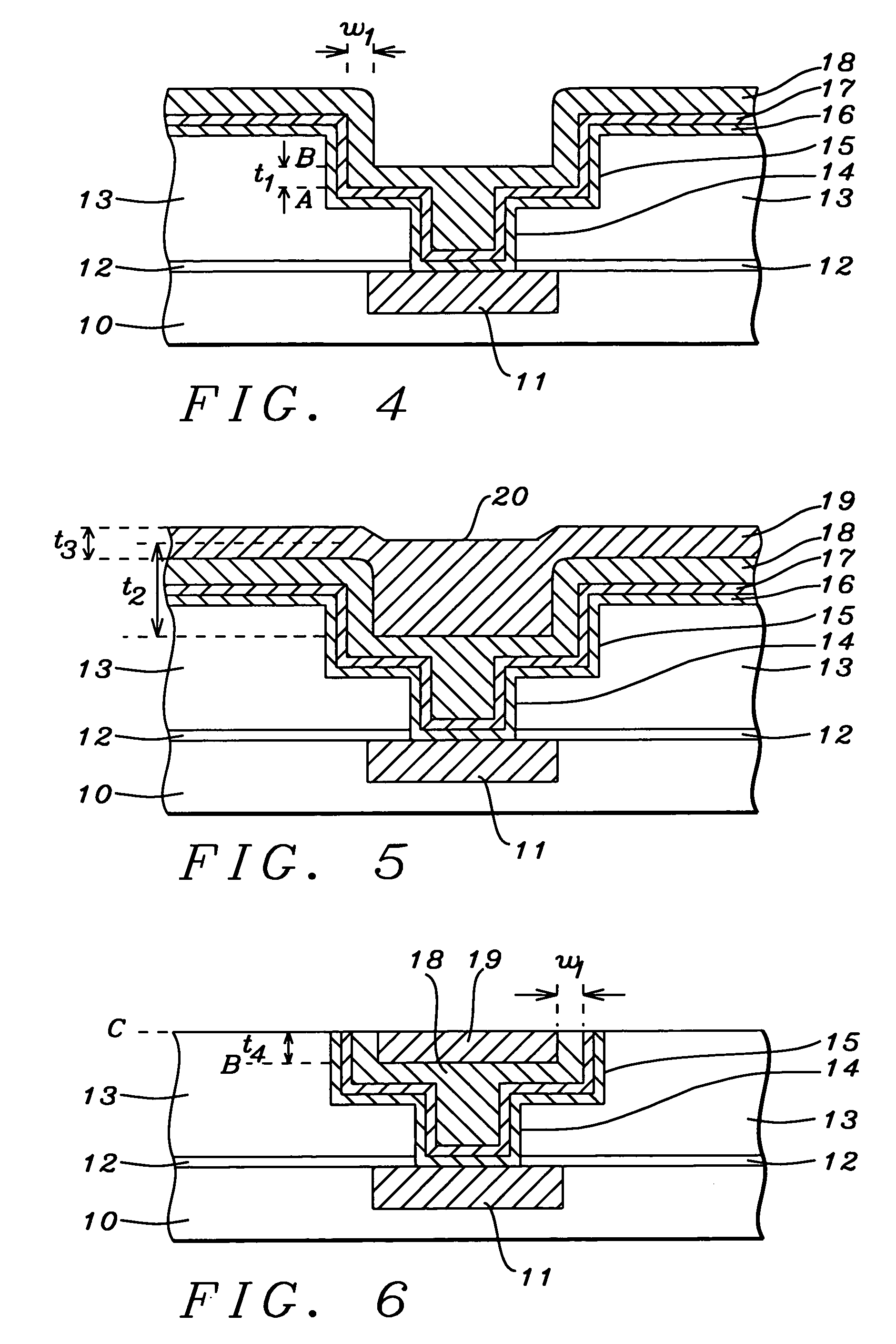Post ECP multi-step anneal/H2 treatment to reduce film impurity
a multi-step anneal/h2 treatment and film impurity technology, applied in the field of metal interconnects, can solve the problems of reduced performance, carbon may become trapped within the deposited metal layer, and the copper interconnect is facing the increasingly difficult challenge of forming a copper interconnect without voids, etc., to achieve low impurity concentration, improve reliability, and reduce the effect of defect density
- Summary
- Abstract
- Description
- Claims
- Application Information
AI Technical Summary
Benefits of technology
Problems solved by technology
Method used
Image
Examples
first embodiment
[0034]the present invention is illustrated in FIGS. 3–7 with regard to the formation of an interconnect in a dual damascene scheme. However, the method may also be applied to forming an interconnect in single damascene structure such as a trench. Referring to FIG. 3, a substrate 10 is provided that is typically silicon and may include active and passive devices that are not shown in order to simplify the drawing. A conductive layer 11 is formed in substrate 10 by conventional means and is comprised of a metal such as Al, Cu, W, or an Al / Cu alloy. Optionally, the conductive layer 11 is formed on a diffusion barrier layer (not shown) within substrate 10. A diffusion barrier layer is used to protect the conductive layer from trace amounts of impurities in substrate 10 that may cause corrosion or oxidation of the conductive layer 11. A diffusion barrier layer will also prevent metal ions in the conductive layer 11 from diffusing into substrate 10 and diminishing the insulating capabilit...
second embodiment
[0061]Referring to FIG. 9, the distance d between the top of the dielectric layer 13 and the surface 20 of the second metal layer 19 above the trench 15 may increase as a result of the second anneal. There may be a reflow of the second metal layer 19 that causes low portions on the surface 20 to become slightly elevated while some of the higher portions on the surface are lowered. The surface of the second metal layer is still uneven after the second anneal. Next, a third metal layer 21 is preferably deposited as an overfill of the trench 15 so that a subsequent planarization process does not cause a divot or dishing defect in the second metal layer 19 within the trench. Although the second metal layer 19 could be formed at a larger thickness to avoid the need for a third metal deposition, the second anneal of a thick second metal layer would not be as effective in removing impurities as from a thinner second metal layer 19 according to the
[0062]Therefore, a third ECP process is per...
PUM
| Property | Measurement | Unit |
|---|---|---|
| thickness | aaaaa | aaaaa |
| thickness | aaaaa | aaaaa |
| thickness | aaaaa | aaaaa |
Abstract
Description
Claims
Application Information
 Login to View More
Login to View More - R&D
- Intellectual Property
- Life Sciences
- Materials
- Tech Scout
- Unparalleled Data Quality
- Higher Quality Content
- 60% Fewer Hallucinations
Browse by: Latest US Patents, China's latest patents, Technical Efficacy Thesaurus, Application Domain, Technology Topic, Popular Technical Reports.
© 2025 PatSnap. All rights reserved.Legal|Privacy policy|Modern Slavery Act Transparency Statement|Sitemap|About US| Contact US: help@patsnap.com



